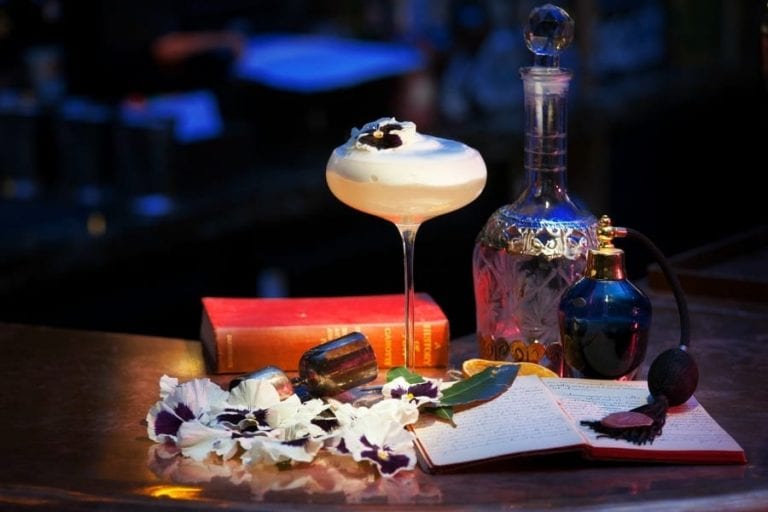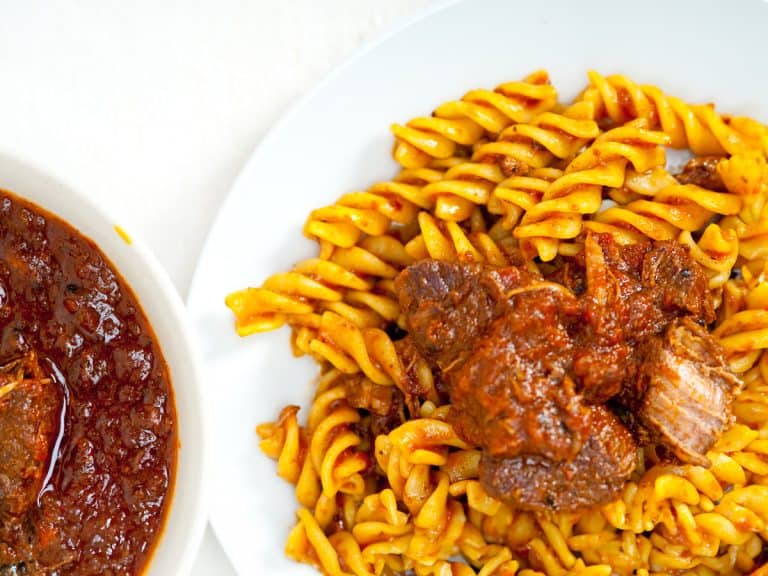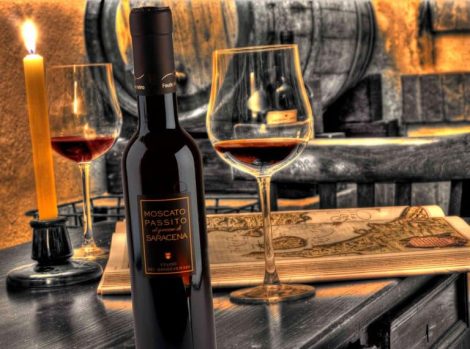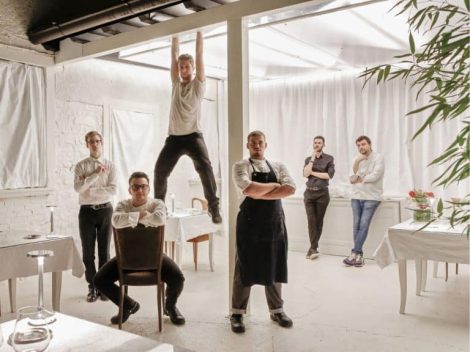Gin: a new successful trend
Although until recently, numerous distilleries in Italy were known for excellent products such as grappa, acquavite, some vodka, as well as a range of liqueurs, today gin is extraordinarily successful. Whatever the reason, whether it’s just a question of fashion (promoted by some star chefs who are famous for drinking their favorite gin and tonic), or whether it depends on business ventures that have encouraged artisanal distillers to sprout up everywhere, whether it emerges from the beverage culture tied to the global success of wine and food as experience, at this moment in Italy, almost 40 different labels of 100% Italian gin are on the market. Some are well-established, others just born.
The latter is the case of a young Roman trio that produces its brand in the home country of gin, England, but follows an Italianissima recipe. “We work in the most prestigious private clubs of London, in contact with the best gin on the market. We followed our hearts, because our affection for this distilled spirit is so strong that we decided to produce our own VII Hills, the first Italian London Dry,” Danilo Tersigni told us. Alessandro Pancini, near Savona, had already produced a spectacular vodka some years ago. “With the potential offered by our own country and with respect for quality, we can achieve excellent results. I love and deeply respect the products I use. Our spirits are organic, from vodka to the latest arrival: Gino, gin made from organic grain.”
Be8
Luigi Iula and Salvatore Romano are partners and friends with an innate passion for cocktails and cooking. That explains the birth of Barz8 in Torino, one of Italy’s best bars, and Punto di Vista restaurant where guests can pair dishes with their cocktails. The menu offers more than 160 types of gin, but the young men wanted something very personal and unique, so they created their own gin, Be8. Harmonious and balanced, it is made by the steeping process, that is the distillation of botanical extracts singly, followed by assembly and redistillation twice in a copper still on a organic grain alcohol base. The botanicals most evident on the nose are juniper (Tuscan), cardamom and cyclamen. On the palate, the seeds and roots of angelica confer an earthy note, coriander seeds give a spicy sensation, black pepper revives the palate and licorice root enhances the balsamic notes on the finish – pine needles and menthol.
Tovel's Gin
Tovel's Gin is a product of the Adamello Brenta Natural Park, in the heart of the Trentino Dolomites. Master distiller Gianluigi Valentini (the distillery of the same name was founded in 1872) uses nine local botanicals that grow on the banks of the Tovel alpine glacial lake: alpine juniper (the principal ingredient in a London Dry), mountain pine common in the zone, elderflower for freshness, lemon zest from the shores of Lake Garda, manna ash to replace cassia, caraway seeds that suggest 5-star anise and licorice, slightly tannic cornelian cherries, gentian root and angelica root. Vapor infusion enhances the aromas of the gin, making it extremely drinkable.
Gino
Ten years ago, a visionary pair, Alessandro Pancini and Luca Graffo, created the Origine project, a laboratory of transformation in continual evolution. In the middle of Valle Bormida, in Cengio, near Savona, the doorway to Piedmont, they began making liquors, and by 2009 they were producing the first organic Italian vodka, the excellent Vodka 0.1. Today, passion and skill have led them to Gino, a distilled spirit of organic grain with five botanicals (juniper, licorice, damascena rose, lemon, sage) all certified organic. Together with water from the Lurisia spring, they express this territory that lies between the Ligurian Riviera and the Maritime Alps. On the nose, juniper emerges above all, accompanied by notes of celery, fresh citrus fruit and spice. Juniper stands out in the mouth as well, along with licorice and roses that give soft notes able to balance the light bitter tones of sage and lemon. Noteworthy aftertaste with each sip.
Solo Wild Gin
This Sardinian company must be admired for being able to communicate their identity through the spirits they produce, unique and representative of the soul of their island region. Vodka, vermouth, mirto and Solo Wild Gin, which is made exclusively from the hand-picked berries of wild juniper plants that grow spontaneously along the island’s coasts. No other botanical is added. The aroma and flavor are deeply concentrated and rich. Thirty days of infusion in grain alcohol is followed by distillation with the discontinuous method for about 10 hours by means of steam heating and a copper still. The nose is overwhelmed and charmed by the perfume of Sardinian juniper that gradually leaves room for hints of resin and citrus fruit. The palate is mouth-filling and warm, long and expressive. A sip of Sardinia.
Imea Gineprina d’Olanda
This is not only about gin, it’s about culture and discovery. Imea is the Italian interpretation of what gin was at the end of the 19thcentury. The recipe is dated 1897 and comes from a rare Italian text containing about 2,000 recipes for spirits that was very popular in its day: The Practical Liquor Maker, by Luigi Sala. The idea of Imea, a made-up name, a common practice in the production of spirits and futuristic mixtures, came from Fulvio Piccinino, a grand maestro in the sector. His gin is like the original, made up of very few aromatic elements, with juniper emerging above all, helped along by anise (in the 19thcentury, a spice that replaced sugar), whose presence is easily recognizable. Other spices are also evident – cloves, cinnamon and nutmeg. This is a unique and different gin, one that transports us to another era.
Dol Gin
Florian Rabanser distills his gin on a plateau in the Dolomites, Alpe di Siusi. His distillery, Zu Plun, is in an alpine chateau dating from the 15thcentury. He uses a 150-liter copper still and 24 botanicals (individually infused in grain alcohol) from the Alto Adige mountains:
juniper, violet roots, sage, caraway, wild fennel, thyme, rose hip flowers and berries, mint, calamus root, elderberry, gentian root, angelica, walnut leaves and lemon zest from Lake Garda. It took two years of developmental work to create Dol Gin, and the local apothecary contributed with an analysis of the plants growing in the zone. Water used for the alcohol reduction is from a glacier spring in nearby Val Senales. On the nose, an explosive bouquet with aromas varying from fresh juniper to mountain herbs. The palate is soft and carries forward the fruity sensation, balanced with lightly bitter notes of gentian root.
Gilbach
The name Gil-Bach came out of a collaboration between Alessandro Gilmozzi, chef patron of Ristorante El Molin in Cavalese, and his ex-sous chef Andreas Bachmann, in 2014. The two had clear goals right from the start. They wanted a gin that was truly from the Trentino mountains, in every way. After gathering and experimenting with botanicals from the woods of Val di Fiemme, they worked with the Distilleria Pilzer in Faver, and in 2015, were ready for their first productions. Juniper, elderberry and blackthorn give a decidedly different character to the spirit. Gilbach initially displays notes of tea and yerba mate, then plum, cherry, hazelnut and light hints of lemon and elderberry. It has the balsamic tones of juniper, resin, anise and rosemary, is very well-balanced, and closes on persistent sensations of roses.
Greedy Gin
Here the tradition of a small English distillery is joined to pure Italian creative flair. Greedy Gin is the idea of About Ten, a young and innovative firm specialized in developing and distributing new ideas. At its head are Francesco Martei and Dave Garzon, Chicco&Dave, founders of a school for bar tenders, Flairtender, in Padua. Distilled in England but the result of the Italian project, Greedy Gin is fresh and dynamic, expressive and lively, reflecting the minds of its producers. Pronounced aromatic notes of citrus fruit and flowers emerge along with balsamic tones. Eighteen flavoring ingredients are used, of which 13 are listed: juniper, orange zest, mandarin, bergamot, cinnamon, sage, lavender, cardamom, lemon zest, angelica, coriander, green tea and mountain pepper. On the nose, an explosion of flowers; in the mouth, long and assertive flavor.
Marconi 46
The number 46 refers to the degree of alcohol, and Via Marconi 46, in Schiavon, is the address of Poli Distellerie. Marconi 46 gin is the latest product of the traditional distillery belonging to the Poli family, who have been working in the heart of the Veneto region since 1898. Marconi is prepared by Jacopo Poli using Crysopea, an innovative bain marie vacuum still. He uses juniper berries, Moscato grapes, mountain pine, stone pine, mint, cardamom and coriander. The bouquet offers an intense juniper aroma with clear balsamic and citrus sensations, especially a pronounced mandarin orange fragrance. The palate is particularly soft thanks to the Moscato grapes. Flavor is persistent and calls up pleasant notes of cardamom, coriander and licorice root. Poli’s long experience is evident in the finesse and elegance of this gin.
Ginius e Pigskin
At the beginning of the 1950s, Silvio Carta decided to devote himself to the vinification and aging of the noble grape Vernaccia, producing a traditional Sardinian wine. Today, together with his son Elio, he also produces two interesting gins: Ginius and Pigskin. The first is full-bodied, made only with Sardinian botanicals, among which are myrtle leaves, mastic resin, thyme, wild fennel, lemon zest, sage and juniper berries – large, green ones, rich in essential oils. The nose takes time to open, and in the mouth the spirit is delicate and moderately persistent. The second label contains the same botanicals as Ginius, but in doubled amounts. It is left to mellow in 100-year-old Sardinian chestnut barrels in which Vernaccia once aged. On the nose, the wood is noticeable, along with plums and dried fruit. The palate is balanced by sensations of sweetness. An anecdote they tell: the name commemorates an adventure the master distiller experienced. While out searching for botanicals he found himself surrounded by wild boar.
VII Hills
The young beverage team that conceived of VII Hills has great potential. An under-thirty trio, Danilo Tersigni, Francesco Medici and Filippo Previero are barmen who work in London. They produced the first London Dry Italian gin. VII Hills is made with herbs and spices inspired by Rome’s seven hills, using a traditional process of distillation in copper stills. The spirit base is extracted from sugar beets. The 12 botanicals are worked separately to extract their essences: artichoke, blood orange, chervil, celery, bay leaf, coriander, lavender, juniper, lemon balm, sage, fennel seeds and Alexander seeds, The nose is an explosion of juniper, fennel, blood orange and dried fruit, intense but not penetrating. The palate is ample and dense, with lively pepper perceptible on the tongue along with an aftertaste of artichoke, almond, juniper and honey. Production will soon be moved to Piedmont.
Marton’s Gin
The Veneto region is a land of great grappa and enlightened minds. For the last two years, Roberto Marton, headquartered in Treviso, has been producing a great Italian Premium Dry Gin in an antique distillery in Bassano del Grappa. It is a cool compound, a gin made by cold infusion, produced beginning with spring water and the best grain grown in Italy and undergoing two distillation processes. The botanicals chosen are citrus zest, cinnamon, anise seeds, juniper berries, pink peppercorns, horseradish from the Veneto, ginger, berries, cloves and licorice root, a flavor Roby particularly loves. This is a complex, unfiltered gin with a pale yellow flavor, well-structured and dry, with licorice and ginger notes that help with balance and freshness. Long, persistent finish dedicated to citrus notes.
Gin Pilz
Faver is an old village located midway along the Trentino valley of Cembra. Since 1957, the Pilzer distillery has been producing top-quality grappa here. After making their reputation with fruit spirits, monovarietal grappa and even a brandy, brothers Bruno and Ivano Pilzer turned their great skills in the art of distillation to producing gin reflecting their territory. In the Gin Pilz recipe (pilz is mushroom in German) are the botanicals from the Trentino woods and high-quality Dolomite water. On the nose, the juniper is delicate and fragrant, combining in a marvelous way with the other fifteen different natural herbs. The gin is dry and assertive, good also consumed straight. Balance and clean flavor are the distinctive traits of the work of master distillers.
Z44
The only one of its kind, with a winning combination of Alpine and Mediterranean features. Dry Gin Z44 comes from the Alto Adige distillery, Roner. Unmistakable, praiseworthy personality comes from the Stone pine cones and juniper that create this gin. The pine cones are collected every summer on the slopes of Corno Bianco, then processed by infusion. The extract is distilled and used in the successive phases of production. Fresh, balsamic notes tending towards menthol emerge – resinous and intense. Framing these are warm shades of juniper, of yarrow that persists and resembles the aroma of chamomile, of violet root that lends precious floral sensations, and gentian root that gives structure and body. The water used is alpine, and the whole combines for a decidedly characteristic gin.
Vallombrosa
Artisanal Vallombrosa gin is produced by the monks of the monastery of the same name. A monovarietal gin, it is made solely with juniper from a specific zone and is distilled without the addition of other plants or aromas. Its premium quality is guaranteed by the high quality of the juniper that grows wild between Sansepolcro and Pieve Santo Stefano, but also by the unchanged, ancient recipe of the Benedictine monks. According to Don Roberto Lucidi: “The recipe dates back three centuries, and we brought it to the public in the 1950s. I am convinced that its quality depends on the secrets of the past. Today we would not be able to obtain the same Vallombrosa.” It is excellent on its own, balanced in its flavors, with a juniper flavor of great personality.
by Giovanni Angelucci
Be8 | Torino | [email protected] | www.puntodivistaristorante.it
Tovel's Gin | Tassullo (TN) | www.myvalentini.com
Gino | Cengio (SV) | [email protected] | www.origine-laboratorio.it
Solo Wild Gin | Sassari | [email protected] | www.puresardinia.eu
Imea Gineprina d’Olanda| Castelnuovo Don Bosco (At) | www.imeagineprina.com
Dol Gin | St. Valentino-Siusi (BZ) | www.zuplun.it
Gilbach | Cavalese (TN) | www.gilbachgin.com
Greedy Gin | Padova | [email protected] - www.abouten.it
Marconi 46 | Schiavon (VI) | www.poligrappa.com
Ginius e Pigskin | Zeddiani (OR) | www.silviocarta.it
VII Hills | Londra | viihills.co.uk
Marton’s Gin | Treviso | www.robymarton.com
Gin Pilz | Faver (TN) | [email protected] | www.pilzer.it
Z44 | Termeno (BZ) | [email protected] | www.roner.com
Vallombrosa | Reggello (FI) | [email protected] | www.evallombrosa.it



 Neapolitan or Bolognese? The (tomato-free) history of the two ragùs that divide Italy
Neapolitan or Bolognese? The (tomato-free) history of the two ragùs that divide Italy Dom Perignon for dogs and sleepless rock stars: the bizarre requests to the world’s best hotel manager
Dom Perignon for dogs and sleepless rock stars: the bizarre requests to the world’s best hotel manager The oil always moves north, reaching England. How the map of olive trees is changing due to climate change
The oil always moves north, reaching England. How the map of olive trees is changing due to climate change The Nobel Sandwich we tried at CERN, just steps from antimatter
The Nobel Sandwich we tried at CERN, just steps from antimatter The two young talents from Gattinara revolutionising Italian cuisine
The two young talents from Gattinara revolutionising Italian cuisine






